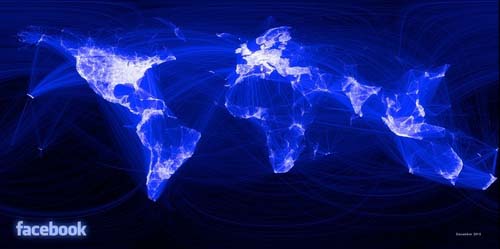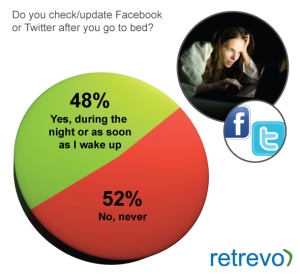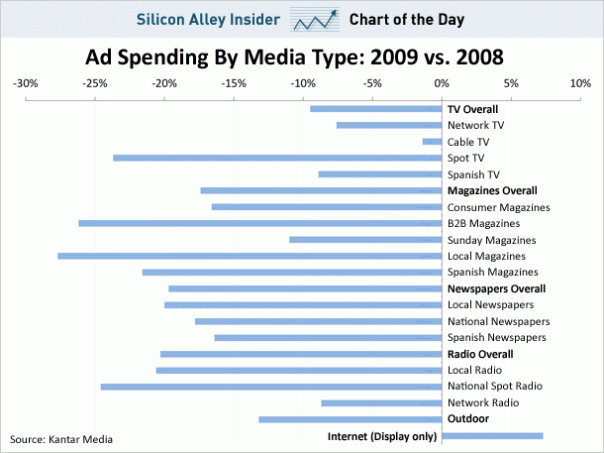The
founder was home in his kitchen cooking dinner when the call came. It
was one of those moments when the color seems to drain out of the food
in front of you. The voice on the other line was the contact at the
company that has been trying to acquire his small startup for several
months. “Our engineers looked at what you showed us during the due
diligence and told our CEO, ‘It doesn’t look so hard, we can build it
ourselves.’”
His thoughts flashed to the NDA the two companies had signed. He
tried to focus on not exploding in a stream of curses. What about the
fancy dinner with the top brass? The handshake deal not to shop his
company around to any other bidders? The 12-month roadmap he had laid
out for the board? The quickly dwindling cash reserves in his own bank
account?In today’s startup industry, mergers and acquisitions are the fastest growing exit for venture-backed companies. According to the most recent study by Ernst and Young, the value and volume of M&A in the technology space surged 41 percent in the last year, reaching levels not seen since the dot-com boom. The dangers for startups in the delicate dance of being pursued and purchased by a big corporate entity are many. It requires them to reveal their most intimate details — everything from their financial health to the lines of code that make their products run.
In the world of corporate mergers, AT&T and T-Mobile for example, the parties arrange an expensive break-up fee, like the $4 billion T-Mobile got when the deal fell through. Startups aren’t so lucky.
“Hearing this guy’s story, it’s just brutal, it makes you sick to your stomach,” said Ben Lerer, CEO of Thrillist, who has acquired companies and is an active venture capitalist. “That’s why it’s so important to find seasoned investors. Entrepreneurs have the energy and the passion to stay up all night every night working on the product. A great VC has the battle scars to tell you when to trust the other party and when its better to play things close to the vest.”
Words of warning
“Sometimes it is innocent and sometimes not so much,” said Chris Dixon, whose company Hunch was recently acquired by eBay, and who has seen all sides of these deals as a founder and investor. “Some companies are known to use acquisition as bait to get info, others are known to follow through and not mislead.”Playing hard to get is one tactic for defending against a bait and switch. “ Don’t disclose critical technical info until last possible moment, after the letter of intent,” Dixon advised. But most importantly, with the uncertainty present in any acquisition, Dixon’s strategy is simply, “To run your business as if a deal won’t happen until it is actually closed.”
How does a startup ensure a good deal when its only leverage is to walk away from the table? “A lot of this is an art, not a science,” says Babak Yaghmaei, a partner at Cooley specializing in startups and venture capital. “I think practically speaking, there’s little that can be done to deal with a ‘bad player’ in a situation like this if the damage to their reputation and board relationships don’t keep the buyer honest.”
Like a lot of the investors we chatted with, Yaghmaei talked about the importance of a Letter of Intent. “Proceeding with deep technical diligence without an LOI is probably not the best idea, particularly if the technology build doesn’t create a sufficiently high enough hurdle. I know that LOIs aren’t binding but at a minimum they create a more ‘vested interest’ in the transactions by creating some formality around the process. Also, a seller can (and should) stage the technology disclosure in the diligence process and try (if possible) to not show all the cards until there is a high enough comfort level that the buyer is really interested and engaged.”
Going into the acquisition process with eyes wide open is the theme our sources returned to time and again. “Companies are always going to do a build versus buy analysis,” said Barry Kramer, a lawyer at Fenwick & West specializing in startups. “What is unusual is to get this far down the path of an acquisition,” before the buyer turns its back on you.
For venture capitalists who work closely with corporate partners, this is a minefield startups are going to have to pay increasing attention to in the coming years. “I think you’re going to see M&A expanding as one of the primary exits for startups,” said Taylor Davidson, a senior associate at the venture arm of the massive ad firm KBS+P. “It would really pay to have an investor on your team who knows the in and outs of this kind of transaction.”
The founder from our story is still looking to sell. He asked for his company to remain anonymous to avoid legal complications over the non-disclosure agreement. But the company had raised a little under $1 million and was well-known and respected in the local tech scene. The deal that fell through would have kept his startup intact, but now he’s just hoping for a soft landing for the investors. The team will disband and have already started looking for new positions in the fertile hiring fields of Silicon Alley. We asked the founder to share his experience, in his own words. The letter that follows is a raw account of a classic startup horror story.
In late September, I got an email from The Company saying they liked our product and wanted to discuss a partnership. We set up a phone call and it became clear that they were looking to acquire a company like ours, and we were interested in continuing a discussion like that.
In October, we had several calls and face-to-face meetings with various people, including the CEO and other senior staff, after signing a mutual NDA. We sent over some basic information about our product, the scale of our operations, and ballpark customer & revenue numbers. We gave them the ballpark offer we were looking for. They indicated a desire to continue the process.
November came and left with no progress, but that was fine because we were busy meeting with two other companies we had also engaged in acquisition discussions. In the meantime, we stayed heads-down on product and kept building.
Beginning of December we got our first real offer, via phone with the details sent over email post-call. It was a lowball offer and one we rejected immediately. We knew what our minimum was and we stuck to it. Several weeks went by. We shipped some amazing new products. Our investors worked their network to push for a deal worth accepting.
Finally, a few days before Christmas, we got The Call: an offer we could get excited about. At least, it seemed to be. But wait, why were they trying to value the stock at almost twice what they gave their own employees? That would result in us getting half the stock for twice the price. We pushed back on that and other terms related to vesting schedule, tax treatment, and earn-out parameters.
Beginning of January, we finally agreed on terms, which were outlined via email upon our request. We were told, “If you agree to these terms, we have a gentlemen’s agreement that you’ll stop talking to other companies?” As it turned out, we were talking to three other companies at the time (the two we were talking to in October declined to proceed, but three more had begun conversations with us in December). We agreed. We asked for an official term sheet but were denied; they wanted to do due diligence first. Maybe this should have been a red flag and cause us to completely halt conversations until a term sheet was signed, but given our waning cash reserves we felt like putting our eggs in this basket and creating a trusting relationship would increase the likelihood the deal would happen. We arranged to spend a couple of days at their offices for due diligence.
The first day of due diligence went great. Our engineering leads diagrammed in full detail how all of our systems work, from database schema to how we use EC2 instances to front-end javascript shenanigans. I was so proud of my team. Our systems handle load today that they wouldn’t project to have until five years from now, all on a minuscule startup budget.
The second day was a little more chaotic. We were given three hours notice that we’d be presenting a 12-month roadmap to the CEO that afternoon, and here to help us create the presentation were the VP of Product, Director of Product Marketing, and Director of User Experience. It was chaos — the three executives were arguing with each other about what to focus on, what was important, what details needed to be solved right now. My team sat back, amazed and horrified. Does nobody know what they want or what the CEO wants? I took charge and presented a plan that I thought would generate the most value; the others agreed. With minutes to spare, we finished up the PowerPoint and presented to the CEO. He nodded a bunch, asked some questions, and left. Later that day, I was told he wanted to meet me for dinner the following week to ask some final questions. We were told to treat ourselves to a fancy dinner on The Company’s dime. Sounds like due diligence was a success!
The next week, we met at a nice restaurant of his choosing. We talked about a bunch of topics including my thoughts on recruiting talent and my team’s commitment to a future with The Company. Everything seemed to be going smoothly. He nodded and said to me, “Are you ready to do this?” I said Yes. He said, “OK. I’m going to present this to my Board of Directors at our next meeting and then we’ll close very quickly after that. Once we do that, I want to make a lot of PR noise about this because it’s a big deal for us.” We shook hands. I walked home that night thrilled — we had agreed to terms, passed due diligence, and had a handshake agreement with the CEO to seal the deal! All that was left was getting the lawyers involved to write the Definitive Agreement and get this thing on the books.
Ten days go by. We’re all a bit nervous but the CEO’s presentation to his Board wasn’t scheduled for another week. Finally, in the last days of January, I get a phone call while I’m in the middle of cooking dinner. It’s from my contact at The Company. He tells me, “I’m sorry, but the CEO changed his mind. We’re not moving forward with you guys.” What? I was furious and trying not to panic. “Why not?” He gave me several reasons, including uncertainty about how our product would integrate into their suite of offerings (shouldn’t that decision have been made back in October?) and disagreement on the roadmap we presented (remember that chaotic three hours on the second day of due diligence? Also, he’s the CEO, if he wants it, he gets it, right?). The one that stuck with me the most was “Our engineers looked at what you showed us during due diligence and told our CEO ‘It doesn’t look so hard, we can build it ourselves.’” Information that we had shared under NDA.
We are a company without the cash to try to enforce the NDA, and The Company knows it since they saw our financials during due diligence. Even if we did have the money, it would be very difficult to prove any wrong doing. We just got screwed. I don’t think we’ll ever know if The Company was ever negotiating in good faith, or if the whole process was meant to siphon information.
As I look back on it, there were a few things we could have done differently, although I suspect we’d have gotten the same result. We could have insisted on a term sheet, even though term sheets are non-binding. Maybe we could have negotiated a breakup fee in case the deal fell through, although I don’t think we had the leverage to force them to agree to one. Ultimately, the real lesson learned is this: get your business to a level of success where you don’t care if the deal falls through. Get profitable. Get such amazing user growth you have investors begging to put in money. With that kind of solid foundation, you can weather any storm.
Source: http://venturebeat.com/2012/02/27/a-classic-startup-horror-story-the-ma-bait-and-switch/















